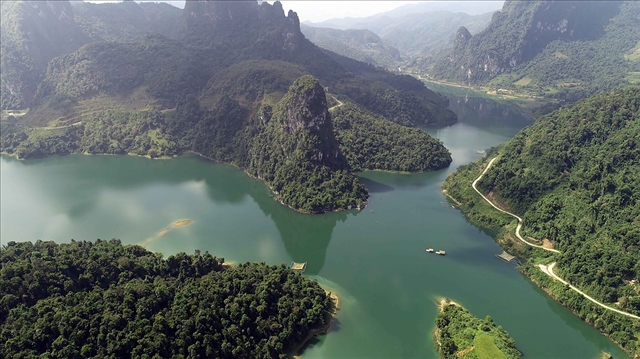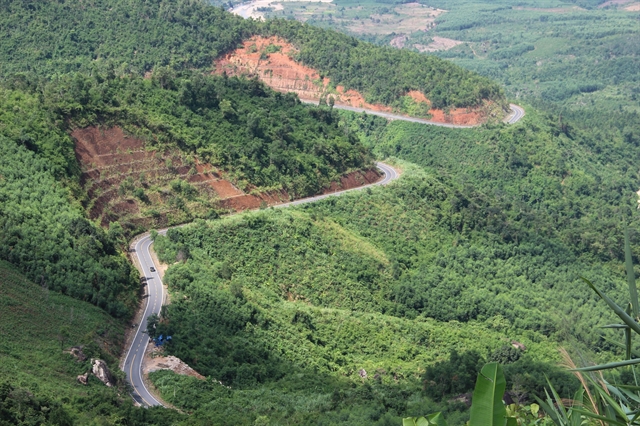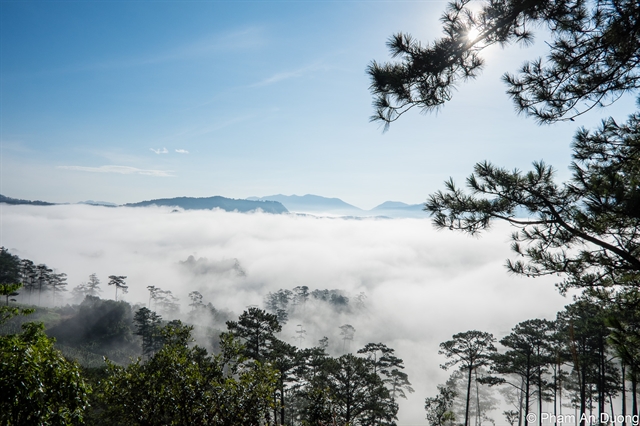 Travel
Travel

Hòn Giao Pass has long been a road for those who love to explore. Each turn is a majestic scene with poetic mountains and forests. Mist hangs low over the pass and flows down the valley.

|
| Hòn Giao Pass connects Đà Lạt in the mountains with Nha Trang on the coast. — Photo mia.vn |
Lâm Giang
Hòn Giao Pass has long been a road for those who love to explore. Each turn is a majestic scene with poetic mountains and forests. Mist hangs low over the pass and flows down the valley.
The pass is part of the route from the flower plateau of Đà Lạt in Lâm Đồng Province to the beautiful coastal Nha Trang City in Khánh Hòa Province. This route is officially called National Road 27C. However, it is often called the “route connecting flowers and sea”. The salient point of this 121km-long road is Hòn Giao Pass, around halfway.
More than a century ago, the French established Đà Lạt but found it impossible to build a road connecting Nha Trang and Đà Lạt due to the dangerous terrain.
However, what was impossible more than a century ago is now possible and construction on a route connecting Nha Trang and Đà Lạt started in 2004. The road was opened in 2007 and the distance from Nha Trang to Đà Lạt was shortened by nearly 100km.
Hòn Giao Pass is 1,700m high and 33km long. It is one of the longest passes in Việt Nam today. This pass is also known by different names such as Khánh Lê, Khánh Vĩnh, Bidoup and Long Lanh.
Tourists often call it Omega Pass for its graph shape. Each name has its own meaning, sometimes associated with mountains, sometimes with people, sometimes showing unique and rare beauty.
The poetic and charming beauty of the landscape around the pass made us want to explore more.

|
| The best way to enjoy the beautiful scenery of the pass is to travel by motorbike. Photo happydaytravel.com |
We started from Đà Lạt City, to have the opportunity to capture the pass as the sun came up and made the night dew shimmer.
If starting from Khánh Hòa, you just need to go to Thành T-junction of Diên Khánh District and ask for directions to Đà Lạt — you will be enthusiastically guided by people. The advantage of this starting point is that the road is quite flat and has been smoothly paved.
We got up very early and rode motorbikes from Đà Lạt City’s centre, following the road to Lake Than Thở through Thái Phiên Commune, which is famous for its green vegetable gardens and fresh flowers. Then, following the unique road through the forest to the east of the suburbs, we caught up with the newly opened road connecting the forest and the sea.

|
| Hòn Giao Pass is lined by rows of tall pine trees. — Photo nld.com.vn |
The road leading to the pass is a winding path between two rows of tall pine trees radiating green shade. Where the pine forests thin, the whole pass appears in front of us like a picture postcard.
High slopes and dense fog began to appear. Motorbikes followed each other, slowly, at a speed of only 20km per hour. There are bends as sharp as elbows and fenced off abysses, requiring steady hands to navigate. At 1,500m, just like that, the motorbikes climb to the sky.
The sun gradually rose and the first rays of light seem to dispel the morning dew, revealing a surprisingly magical space. That is the peak of Hòn Giao Pass at an altitude of 1,700m.
On the ground, the dew on the leaves of the grass by the roadside reflected the sunlight and became sparkling like crystal drops. In the sky, the clouds mixed with the colour of the sun, creating a scene that looked like paradise.
The sun then tore through the dense fog, opening a beautiful picture of nature at the foot of the pass. It was a majestic mountain scene with an endless green colour. In the distance, smoke rose from the houses of the Raglai ethnic minority. The clouds seemed to divide the light into spaces so that from the top looking down, the beams of light like a lamp shone directly down on the villages.

|
| Along the pass, you can admire the clash of pine trees and clouds. — Photo trekkingtour.club |
The descent is quite interesting, starting at a height of 1,700m, causing our ears to pop like we had just gotten off a plane. Looking back, the landscape had changed dramatically. Ahead, the coastal city of Nha Trang welcomed us from a distance.
Exploring new roads is always exciting and it is important to seek new horizons. The meaning is always on the way, on the journey. The destination is not the most important. VNS